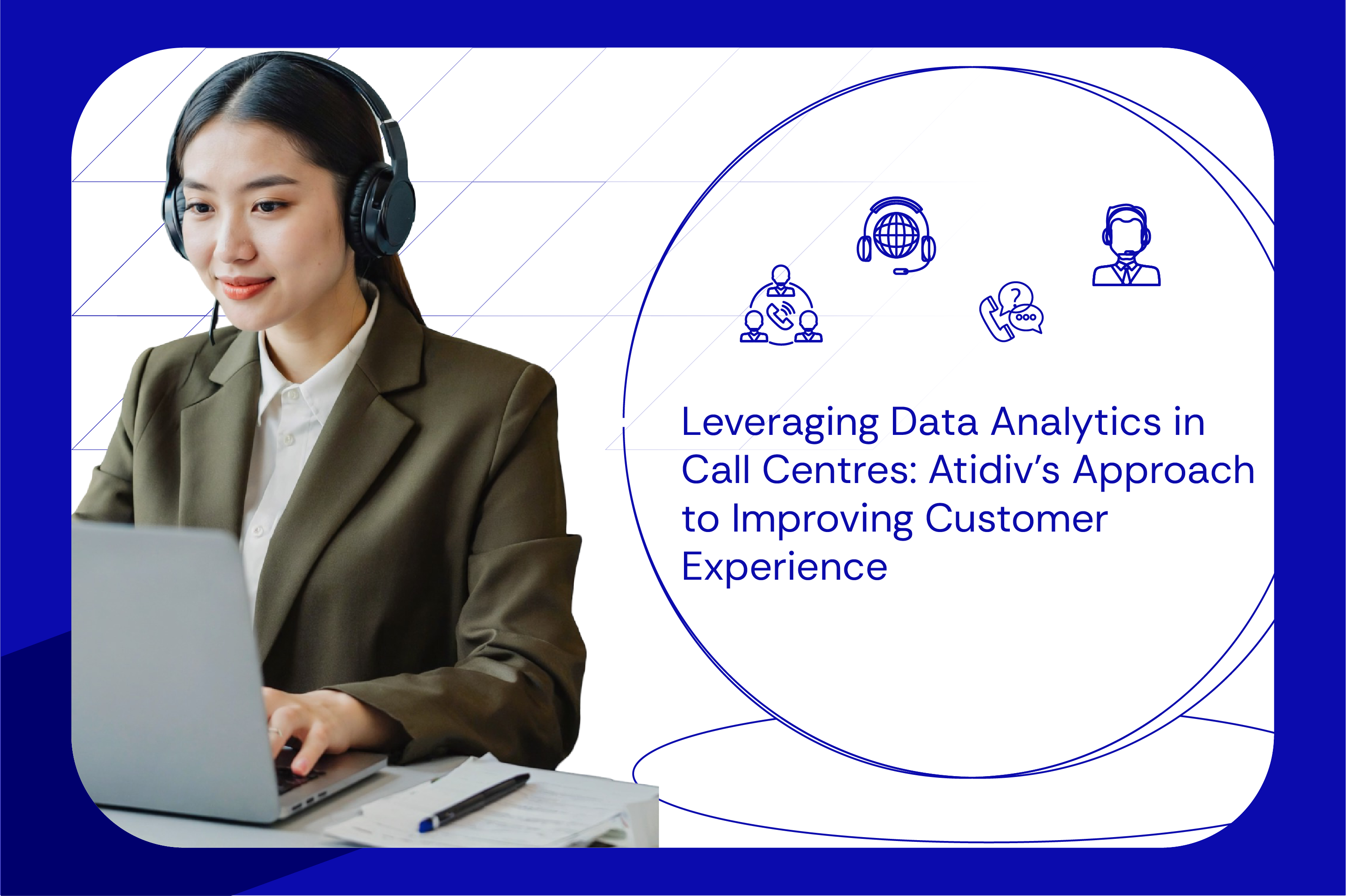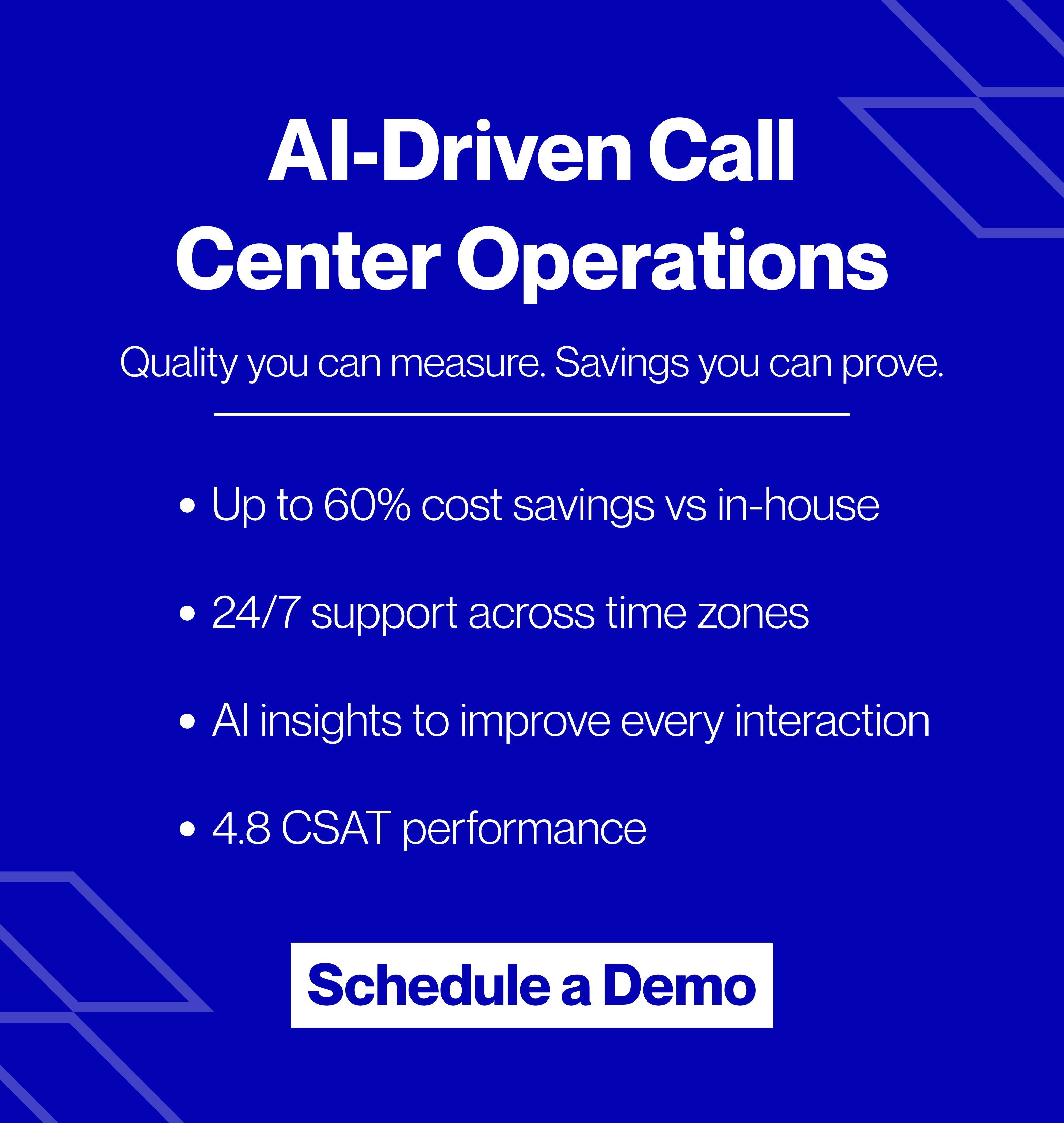Call centre management refers to running a contact centre smoothly. The goal is to offer the best customer experience (CX). To do so, businesses should analyse data and capture key metrics like Average Handling Time (AHT), First Call Resolution (FCR), sentiment analysis and more.
Do you know what keeps businesses afloat? In the past, it was high-quality products at competitive prices. But certainly, the world has moved beyond that!
Today, consumer brands and D2C companies in competitive markets like the US, UK & Australia must keep their customers happy to succeed. And, that is done by offering smooth interactions across multiple channels (omnichannel customer experience). Even studies show that companies with strong omnichannel strategies keep almost 90% of their customers. This clearly indicates that great service often leads to loyalty.
However, just having a call centre isn’t enough! To understand the real needs of customers in 2025, CX leaders and Directors of customer support must leverage call centre analytics and predictive analytics to understand issues before they escalate.
At Atidiv, we use advanced technology and modern tools to capture the most important analytics. Moreover, as a call centre manager, we resolve issues faster, personalise interactions and create an experience that keeps customers coming back.
Our CX solutions are built for scaling D2C and consumer brands with support teams and $5M+ in revenue. If you’re a VP, Senior Manager, or Director overseeing customer experience, this blog is designed to show how data analytics impacts CLTV and retention.
What is Call Centre Management?
Call centre management means running a call centre smoothly to provide great customer service. Generally, major call centre responsibilities are related to managing employees and improving processes to meet business goals. For more clarity, let’s see what call centre management comprises:
Some Important Parts of Call Centre Management
- Hiring and training: Finding the right people and training them to handle customer calls professionally
- Monitoring performance: Checking how well agents are analysing key metrics like call quality and customer satisfaction. Using KPIs and call centre analytics to evaluate service quality.
- Using technology: Using software, AI tools and call routing systems to improve customer support.
- Improving processes: Regularly updating methods to make the call centre work better.
- Enhancing CX: Making sure customers get fast and helpful responses.
Managing resources: Scheduling the right number of agents to handle calls.
Call Center vs. Contact Center
Earlier, a call centre only handled phone calls. But in 2025, call centre responsibilities have increased due to the use of:
- Email service outsourcing
- Chat
- Social media
- Messaging apps
That’s why businesses now call them contact centers instead of just call centres. Today, both terms mean the same thing because customer service happens across many channels, not just phone calls.
What Call Center Data Analytics You Must Measure in 2025?

To improve call centre performance and customer service, businesses need to track Key Performance Indicators (KPIs). These KPIs help you to improve operations and enhance customer satisfaction. Below are some important analytics that every business should measure:
1. Average Handling Time (AHT)
It measures how long an agent spends on each call. It includes time for:
- Talking
- Hold time
- After-call work
The formula to calculate AHT is:
AHT = (Total Talk Time + Hold Time + Follow-Up Time) / Total Answered Calls
Be aware that a high AHT means agents take longer to resolve issues. This increases costs and frustrates customers.
2. Abandonment Rate
It is the percentage of callers who hang up before speaking to an agent. Usually, a high abandonment rate means long wait times. It again leads to unhappy customers.
3. First Call Resolution (FCR)
This metric measures the percentage of customer problems solved in the first call without needing follow-ups. Usually, a high FCR means better service and happier customers.
4. Service Level Agreement (SLA) adherence
It tracks whether the call centre meets its promised response time and service quality.
The formula to calculate SLA adherence is:
SLA Adherence = (Number of Calls Answered / Target Time Total Calls) × 100
If your team is meeting SLA goals, then it means they are successfully fulfilling call centre responsibilities. It also improves customer trust and satisfaction.
5. Net Promoter Score (NPS)
It measures customer loyalty based on their willingness to recommend the company. A high NPS generally means more loyal customers and positive word-of-mouth.
Let’s see how it works:
- Customers rate their experience on a scale from 1 to 10.
- Now, based on their ratings, they are classified as follows:
- Promoters (9-10): These customers love the service and would recommend it.
- Passives (7-8): These customers are satisfied but not enthusiastic.
- Detractors (0-6): These are unhappy customers who may leave bad reviews.
6. Customer Effort Score (CES)
CES is an important call centre management metric. It measures how easy or difficult it is for customers to get their problems solved. Mostly, a lower effort means happier customers.
7. Utilisation Rate
It measures how much time agents spend actively to help customers versus waiting for calls.
A higher utilisation means agents are working professionally and adhering to their call centre responsibilities.
8. Adherence to schedule
This metric tracks whether agents follow their work schedules. While tracking, it also considers breaks and shift timings. Be aware that poor schedule adherence leads to longer wait times for customers.
9. Sentiment Analysis
This analysis detects customer emotions during a call (happy, frustrated, angry, etc.).
Using this data, you can identify unhappy customers and try to improve their experience.
10. Topic Modeling
Here you find common topics in customer messages (e.g., late delivery complaints). Such tracking allows you to identify and focus on common customer concerns.
How Does Atidiv Improve CX?

At Atidiv, we help mid sized and D2C and consumer brands in the US, UK & Australia maintain 98% quality assurance score. To improve customer service, we track major KPIs and customise solutions based on each client’s needs. Our leadership team brings years of experience in scaling CX operations for $5M+ revenue brands.
Whether you are scaling support operations or managing high call volumes, our flexible data driven approach ensures improvements in CLTV, retention and operational efficiency.
In the Past, Atidiv Has Helped Businesses Save Money
This approach has helped businesses save money and improve customer service rankings. In the past, we have worked:
- In the U.S., with the largest online tire retailer. Atidiv helped them save $1.3 million. This allowed us to become the top-ranked company for customer service in their industry.
- In the UK, with another leading online tire retailer. Atidiv helped them save $500,000 per year by improving customer support processes.
These results highlight our ability to increase ROI for CX leaders, not just operational cost savings.
Boost CX with a Practical Approach

Nowadays, call centre management is more than just handling calls! To enhance CX, businesses must track key analytics like:
- Average Handling Time (AHT)
- Abandonment rate
- SLA adherence
- Topic modelling
- First Call Resolution (FCR) and more
As your preferred call centre partner, Atidiv applies a three-step framework: Discover, Develop, Deliver, to optimise customer experience. This structured model allows VPs and Directors of CX to scale operations confidently.
Our proven strategies have helped companies save millions. So, do you wish to stay ahead in a competitive market? Choose Atidiv today and let us turn customer interactions into lasting relationships!
FAQs On Call Center Management
1. How can call center data analytics improve call center performance?
To perform data analysis, your business should track key metrics like:
- Average Handling Time (AHT)
- First Call Resolution (FCR)
- Abandonment rate
- Customer sentiment
By analyzing them, you can reduce the wait times of your agents and help them resolve issues faster. This helps in better call center management and enhances customer satisfaction.
2. What are the biggest challenges in call center management?
Call center outsourcing companies face challenges like:
- High call volumes
- Long wait times
- Agent burnout
- Inconsistent service quality
Usually, poorly managed workflows and outdated technology make things worse. For better call center management, use data analytics and optimize staffing.
3. Why is First Call Resolution (FCR) important in a call center?
FCR measures how many customer issues are resolved in the first call without follow-ups. A high FCR reduces frustration and builds customer trust. Please note that if FCR is low, customers have to call again. This increases workload and decreases satisfaction.
4. How to reduce call abandonment rates?
High call abandonment happens when customers hang up due to long wait times. As a business owner, you can lower this by optimizing staffing and improving call routing. Also, you can use AI-powered chatbots for quick queries.
5. How can sentiment analysis help improve customer service?
Sentiment analysis detects customer emotions (like frustration, anger, or satisfaction) during calls. By analyzing this data, your team can:
- Identify unhappy customers
- Train agents to handle difficult situations better
- Improve overall service quality
By using an advanced sentiment analysis tool call centre data analytics, you can even personalize interactions and enhance CX.
6. What is call center data analytics?
Call center data analytics is the result of gathering, analyzing, and interpreting data generated in the contact center environment. This analysis helps call center teams gain insights into various operations aspects, including agent performance, customer satisfaction, call volume trends, service level adherence, and more.


